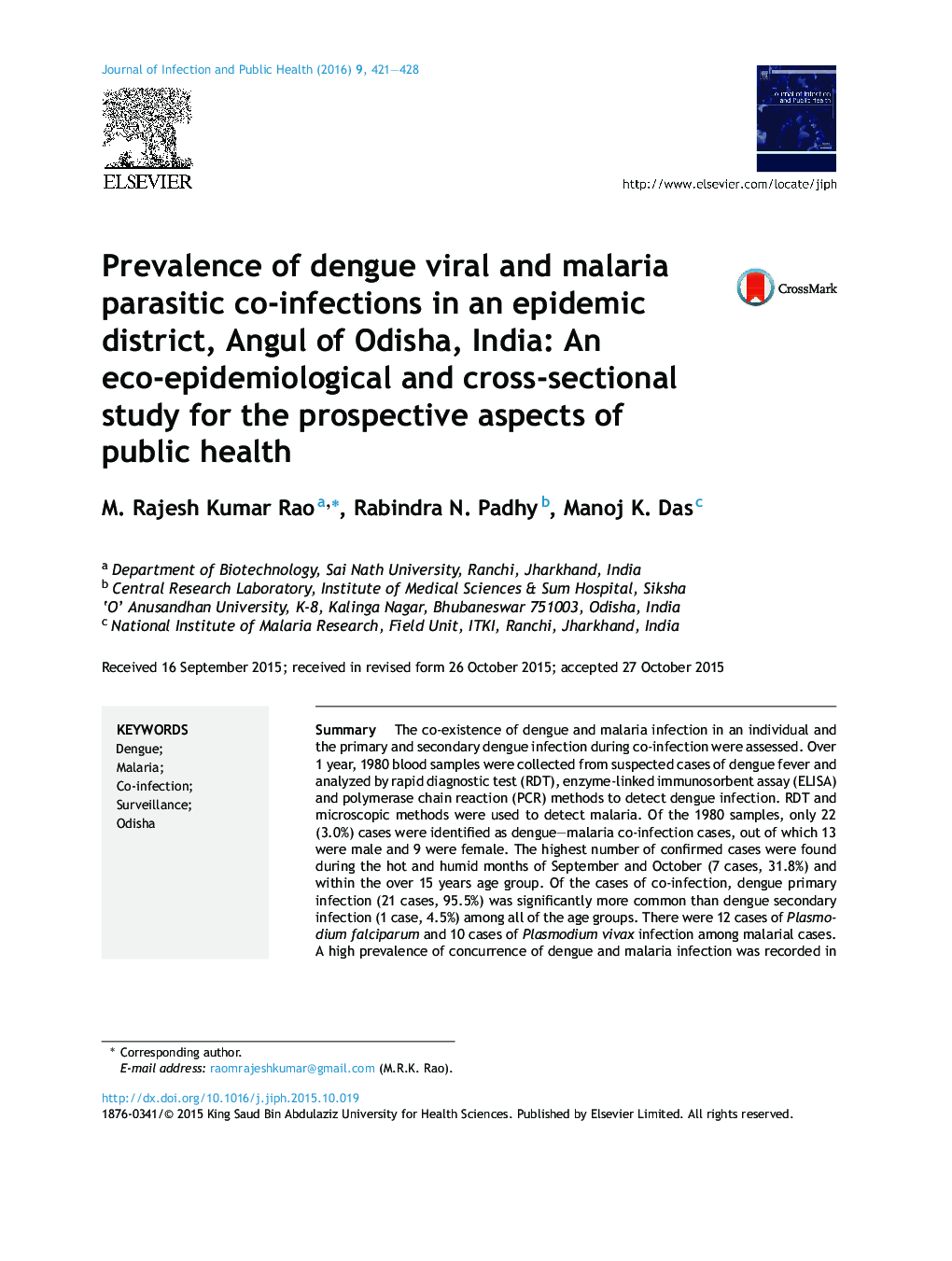| Article ID | Journal | Published Year | Pages | File Type |
|---|---|---|---|---|
| 3405897 | Journal of Infection and Public Health | 2016 | 8 Pages |
SummaryThe co-existence of dengue and malaria infection in an individual and the primary and secondary dengue infection during co-infection were assessed. Over 1 year, 1980 blood samples were collected from suspected cases of dengue fever and analyzed by rapid diagnostic test (RDT), enzyme-linked immunosorbent assay (ELISA) and polymerase chain reaction (PCR) methods to detect dengue infection. RDT and microscopic methods were used to detect malaria. Of the 1980 samples, only 22 (3.0%) cases were identified as dengue–malaria co-infection cases, out of which 13 were male and 9 were female. The highest number of confirmed cases were found during the hot and humid months of September and October (7 cases, 31.8%) and within the over 15 years age group. Of the cases of co-infection, dengue primary infection (21 cases, 95.5%) was significantly more common than dengue secondary infection (1 case, 4.5%) among all of the age groups. There were 12 cases of Plasmodium falciparum and 10 cases of Plasmodium vivax infection among malarial cases. A high prevalence of concurrence of dengue and malaria infection was recorded in this ecosystem. In light of the severity of co-infection and overlapping symptoms, a multidimensional diagnostic approach is suggested.
